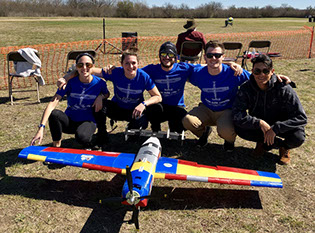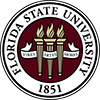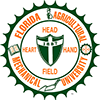QUICK NAV
Abstract
Project Scope
Acknowledgement
Customer Needs
Target Summary
Concept Generation
Possible Concepts
Calculations





General Requirements
Restrictions
System Requirements
Payload Requirements
Advising Direction
Customer Statement
Competing designs are limited to fixed wing aircraft only.
All aircraft must be controllable in flight.
If an aircraft is equipped with a wheeled landing gear, the aircraft must have some form of ground steering mechanism for positive directional control during takeoffs and landings.
Interpreted Need
The wings of the aircraft will be fixed to the body of the aircraft.
The aircraft is controlled by the user during flight.
Ground steering mechanism will be present in final product.
Customer Statement
Interpreted Need
Customer Statement
Interpreted Need
Customer Statement
Interpreted Need
Customer Statement
Interpreted Need









![Project Scope Project Description The objective of this project is to engineer, build, and compete a validated scaled aircraft, one which adheres to rules from the SAE Aero Design competition. Key Goals We will represent FAMU-FSU College of Engineering by attending and competing with an original designed aircraft. The aircraft will be engineered and fabricated to follow the competition rules of both the SAE aero design regular class competition. We will focus on many, but not all, competition scoring parameters to earn a high ranking. These parameters shall be determined by the design team. Once built, the aircraft will undergo testing and verifications before competing to ensure eligibility. Although the project will be funded by the Florida Space Grant, Team 524 will seek additional funding from outside sources. Market We have no intent of creating a marketable product. However, because our product will compete in a competition with the scoring of the design and performance done by the competition judges, it is important to appeal to those who will make jurisdictions to maximize contest points. Assumptions Meeting the expectations set by our shareholders and competition judges will require additional funding. Expenses to enter the competitions and buy the necessary materials to build our aircraft are not fully covered by the Florida Space Grant. Therefore, we will have to seek additional funding to complete the project. All team members have read the competition rulebooks and are fully aware of any design restrictions. [SM1] Any prizes or awards earned due to the competitions will be evenly distributed between all members of the team. Shareholders The shareholders for the SAE Aero Design Competitions Project: Dr. Shayne McConomy Dr. Chiang Shih Florida Space Grant FAMU-FSU College of Engineering](images/u12812-37.png?crc=54491233)






